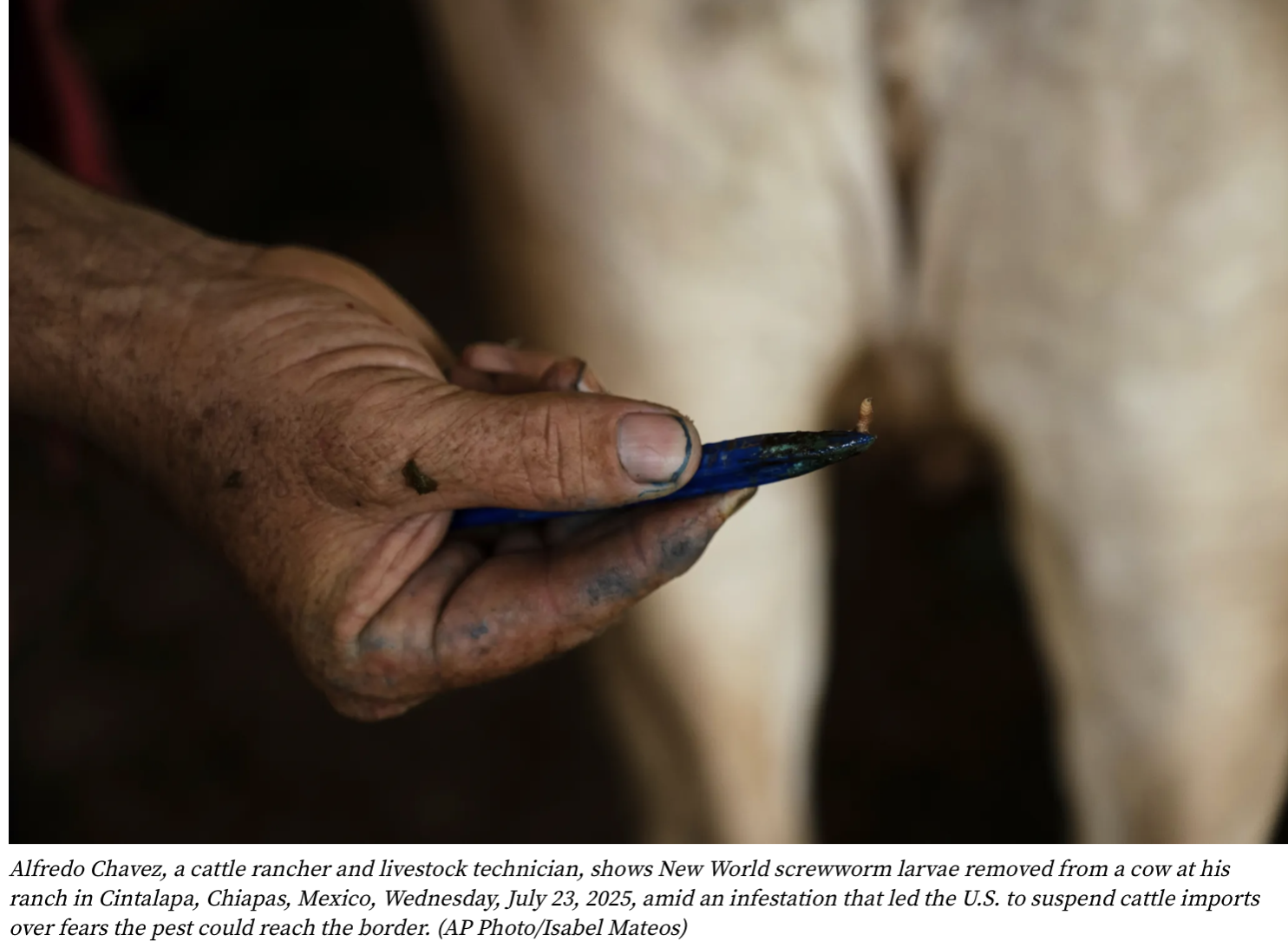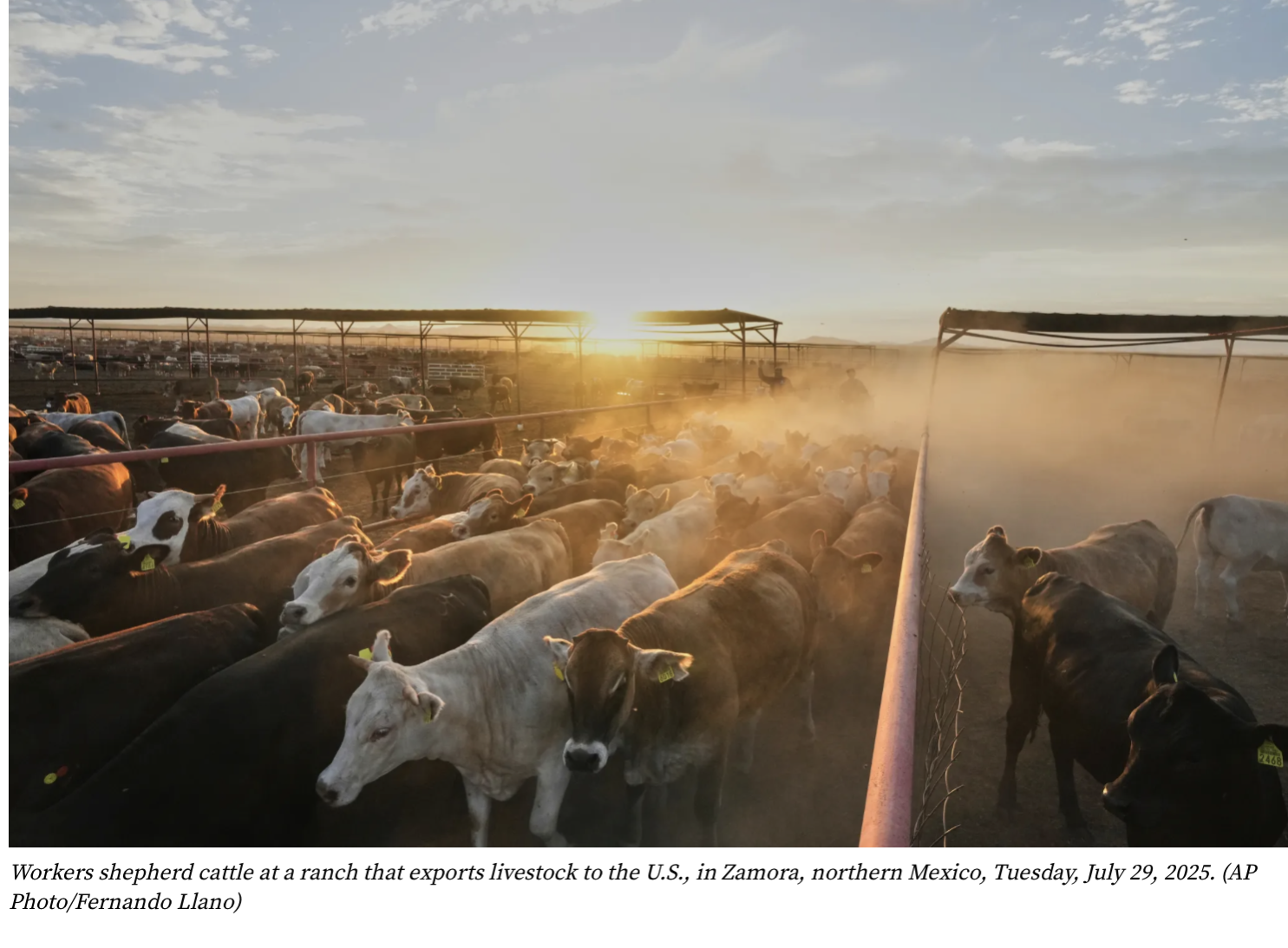Cuellar: Furloughed USDA inspectors can’t check for New World screwworm

Cuellar: Furloughed USDA inspectors can’t check for New World screwworm
By Sandra Sanchez
This comes as Mexican officials this week announced that a second case of New World screwworm has been found in a cow in the northern Mexican border state of Nuevo León.
”During the shutdown, the money is there. But remember, some of those folks are not working right now. So that’s what we’re concerned about,” Cuellar, D-Texas, told Border Report on Wednesday evening.
”It’s a concern because we have a shutdown right now. Those flies are not going to stop,” Cuellar said.
Cuellar did not specify how many workers currently have been furloughed. He did say that federal agriculture inspectors were still patrolling the region and checking for fever tick, which has been a problem for years along the South Texas border.
He says over 15,000 people in his congressional district have been furloughed. His district spans the border from Starr County to Webb County, which includes Laredo.
Rio Grande City is in Starr County and is located about 120 miles north of the Mexican city of Montemorelos where the latest infected calf was found.
“The larvae were dead or intoxicated by the antiparasitic ivermectin and the larvicidal bath, which are implemented mandatorily as part of the double treatment established under the new protocol against New World Screwworm NWS,” Mexican officials said in a statement.
Mexican officials say this latest case is not related to the first infected cow found with screwworm on Sept. 20 in Sabinas Hidalgo, Mexico, also in the state of Nuevo León.
That case was even closer to the U.S.-Mexico border, just about 70 miles south of the rural ranching town of Zapata, Texas.
”The screwworm cannot reach our southern border and it is getting dangerously close,” U.S. Rep. Monica De La Cruz, R-Texas, told Border Report on Thursday.
De La Cruz says the United States is working with Mexican officials and has pledged $750 million in federal funds toward eradicating the New World screwworm and preventing it from crossing the border.

Agriculture Secretary Brooke Rollins visited the Rio Grande Valley in June and announced $8 million dollars in federal funds to fly sterilized screwworms to Mexico and Panama to stop the spread.
De La Cruz said the planes carrying sterilized flies are launching from Moore Air base in Edinburg, which is part of her congressional district.
The additional funds will establish Moore as a facility to create sterilized flies but Cuellar says that won’t be ready for about 18 months.
Meanwhile, the flies are advancing toward the South Texas border. The first cases were detected in Mexico last November.
New World Screwworms were eradicated in the United States in the 1960s but caused millions of dollars in damages.

U.S. Sen. John Cornyn, R-Texas, estimates that if the pests cross into Texas it could cause $1 billion in damages to the cattle industry and $3.7 billion to the general economy.
The Texas Veterinary Medical Association urges pet owners and ranchers to check animals regularly for any signs of screwworm infection, which could include:
- Unusual swelling or discharge from any skin wound, no matter how small.
- Foul odors — infested wounds have a very distinctive, strong smell.
- Behavioral changes such as pain, licking or chewing at a wound, loss of appetite or
lethargy.
